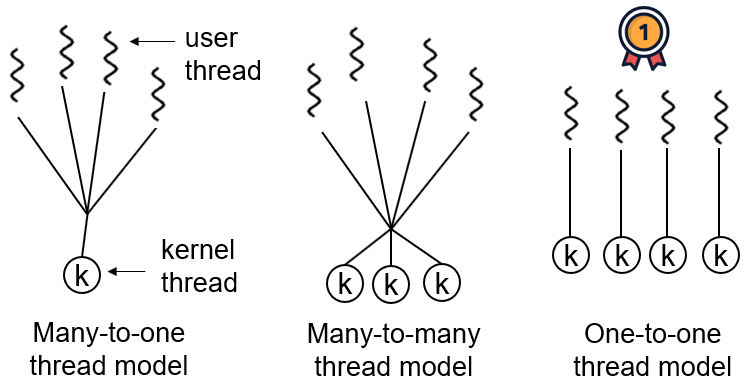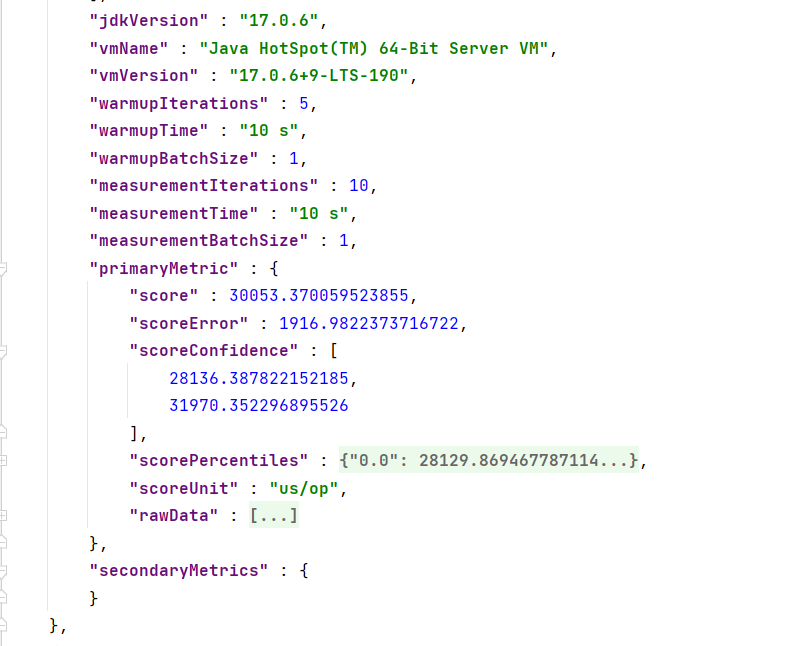Spring IOC容器-Bean管理——基于XML(续集)
IOC 操作 Bean 管理
1、FactoryBean
1、Spring 有两种类型 bean,一种普通 bean,另外一种工厂 bean(FactoryBean)
2、普通 bean:在配置文件中定义 bean 类型就是返回类型
3、工厂 bean:在配置文件定义 bean 类型可以和返回类型不一样 第一步 创建类,让这个类作为工厂 bean,实现接口 FactoryBean 第二步 实现接口里面的方法,在实现的方法中定义返回的 bean 类型
1
2
3
4
5
6
7
8
9
10
11
12
13
14
15
16
17
18
19
20
| public class MyBean implements FactoryBean<Course> {
@Override
public Course getObject() throws Exception {
Course course = new Course();
course.setCname("abc");
return course;
}
}
<bean id="myBean" class="com.atguigu.spring5.factorybean.MyBean">
</bean>
@Test
public void test3() {
ApplicationContext context =
new ClassPathXmlApplicationContext("bean3.xml");
Course course = context.getBean("myBean", Course.class);
System.out.println(course);
}
|
2、bean 作用域
在 Spring 里面,默认情况下,bean 是单实例对象,下面进行作用域设置:
- 在 spring 配置文件 bean 标签里面有属性(scope)用于设置单实例还是多实例
- scope 属性值 第一个值 默认值,singleton,表示是单实例对象 第二个值 prototype,表示是多实例对象
1
2
3
| <bean id="book" class="com.atguigu.spring5.collectiontype.Book" scope="prototype">
<property name="list" ref="bookList"></property>
</bean>
|
- singleton 和 prototype 区别
- singleton 单实例,prototype 多实例
- 设置 scope 值是 singleton 时候, 加载 spring 配置文件时候就会创建单实例对象 ;
- 设置 scope 值是 prototype 时候,不是在加载 spring 配置文件时候创建对象,在调用 getBean 方法时候创建多实例对象
3、bean 生命周期
1 ) 生命周期 :
2 ) bean 生命周期
- 通过构造器创建 bean 实例(无参数构造)
- 为 bean 的属性设置值和对其他 bean 引用(调用 set 方法)
- 调用 bean 的初始化的方法(需要进行配置初始化的方法)
- bean 可以使用了(对象获取到了)
- 当容器关闭时候,调用 bean 的销毁的方法(需要进行配置销毁的方法)
3 ) 演示 bean 生命周期 :
1
2
3
4
5
6
7
8
9
10
11
12
13
14
15
16
17
18
19
| public class Orders {
public Orders() {
System.out.println("第一步 执行无参数构造创建 bean 实例");
}
private String oname;
public void setOname(String oname) {
this.oname = oname;
System.out.println("第二步 调用 set 方法设置属性值");
}
public void initMethod() {
System.out.println("第三步 执行初始化的方法");
}
public void destroyMethod() {
System.out.println("第五步 执行销毁的方法");
}
}
|
创建类实现 BeanPostProcessor接口
1
2
3
4
5
6
7
8
9
10
11
12
13
14
15
16
17
18
19
20
21
22
23
24
25
26
27
28
29
30
31
32
| public class MyBeanPost implements BeanPostProcessor {
@Override
public Object postProcessBeforeInitialization(Object bean, String beanName) throws BeansException {
System.out.println("在初始化之前执行的方法");
return bean;
}
@Override
public Object postProcessAfterInitialization(Object bean, String beanName) throws BeansException {
System.out.println("在初始化之后执行的方法");
return bean;
}
}
<!--配置文件的bean参数配置-->
<bean id="orders" class="com.atguigu.spring5.bean.Orders" init-method="initMethod" destroy-method="destroyMethod"> <!--配置初始化方法和销毁方法-->
<property name="oname" value="手机"></property><!--这里就是通过set方式(注入属性)赋值-->
</bean>
<!--配置后置处理器-->
<bean id="myBeanPost" class="com.atguigu.spring5.bean.MyBeanPost"></bean>
@Test
public void testBean3() {
ClassPathXmlApplicationContext context =
new ClassPathXmlApplicationContext("bean4.xml");
Orders orders = context.getBean("orders", Orders.class);
System.out.println("第四步 获取创建 bean 实例对象");
System.out.println(orders);
context.close();
}
|
4 ) bean 的后置处理器
bean 生命周期有七步(正常生命周期为五步,而配置后置处理器后为七步)
- 通过构造器创建 bean 实例(无参数构造)
- 为 bean 的属性设置值和对其他 bean 引用(调用 set 方法)
- 把 bean 实例传递 bean 后置处理器的方法
postProcessBeforeInitialization
- 调用 bean 的初始化的方法(需要进行配置初始化的方法)
- 把 bean 实例传递 bean 后置处理器的方法
postProcessAfterInitialization
- bean 可以使用了(对象获取到了)
- 当容器关闭时候,调用 bean 的销毁的方法(需要进行配置销毁的方法)
4、xml自动装配Bean
自动装配的配置文件:
1
2
3
4
5
6
7
8
9
10
11
12
13
14
15
16
17
18
19
20
21
22
23
24
25
| <?xml version="1.0" encoding="UTF-8"?>
<beans xmlns="http://www.springframework.org/schema/beans"
xmlns:xsi="http://www.w3.org/2001/XMLSchema-instance"
xsi:schemaLocation="http://www.springframework.org/schema/beans http://www.springframework.org/schema/beans/spring-beans.xsd">
<bean id="emp" class="com.Keafmd.spring5.autowire.Emp" autowire="byType">
</bean>
<bean id="dept" class="com.Keafmd.spring5.autowire.Dept"></bean>
</beans>
|
测试代码相同:
1
2
3
4
5
6
7
8
9
10
11
12
13
14
15
16
17
18
19
20
| import com.Keafmd.spring5.autowire.Emp;
import com.Keafmd.spring5.bean.Orders;
import com.Keafmd.spring5.collectiontype.Book;
import com.Keafmd.spring5.collectiontype.Course;
import com.Keafmd.spring5.collectiontype.Stu;
import com.Keafmd.spring5.factorybean.MyBean;
import org.junit.Test;
import org.springframework.context.ApplicationContext;
import org.springframework.context.support.ClassPathXmlApplicationContext;
public class TestSpring5demo1 {
@Test
public void test5(){
ApplicationContext context = new ClassPathXmlApplicationContext("bean5.xml");
Emp emp = context.getBean("emp",Emp.class);
System.out.println(emp);
}
}
|
测试结果:
Emp{dept=Dept{}}
这就是自动装配,但是这种基于xml自动装配并不常用,常用的是基于注解的。
以上就是基于xml的自动装配。
5、外部属性文件
- 方式一:直接配置数据库信息 :(1)配置Druid(德鲁伊)连接池 (2)引入Druid(德鲁伊)连接池依赖 jar 包
1
2
3
4
5
6
7
8
|
<bean id="dataSource" class="com.alibaba.druid.pool.DruidDataSource">
<property name="driverClassName" value="com.mysql.jdbc.Driver"></property>
<property name="url" value="jdbc:mysql://localhost:3306/userDb"></property>
<property name="username" value="root"></property>
<property name="password" value="root"></property>
</bean>
|
- 方式二:引入外部属性文件配置数据库连接池
- 创建外部属性文件,properties 格式文件,写数据库信息(
jdbc.properties)
1
2
3
4
| prop.driverClass=com.mysql.cj.jdbc.Driver
prop.url=jdbc:mysql://localhost:3306/userDb
prop.userName=root
prop.password=qwer
|
2. 把外部 properties 属性文件引入到 spring 配置文件中 —— 引入 context 名称空间
1
2
3
4
5
6
7
8
9
10
11
12
13
14
15
16
17
18
| <beans xmlns="http://www.springframework.org/schema/beans"
xmlns:xsi="http://www.w3.org/2001/XMLSchema-instance"
xmlns:context="http://www.springframework.org/schema/context"
xsi:schemaLocation="http://www.springframework.org/schema/beans http://www.springframework.org/schema/beans/spring-beans.xsd
http://www.springframework.org/schema/context http://www.springframework.org/schema/context/spring-context.xsd">
<context:property-placeholder location="classpath:jdbc.properties"/>
<bean id="dataSource" class="com.alibaba.druid.pool.DruidDataSource">
<property name="driverClassName" value="${prop.driverClass}"></property>
<property name="url" value="${prop.url}"></property>
<property name="username" value="${prop.userName}"></property>
<property name="password" value="${prop.password}"></property>
</bean>
</beans>
|
IOC 操作 Bean 管理(基于注解方式)
1、什么是注解
(1)注解是代码特殊标记,格式:@注解名称(属性名称=属性值, 属性名称=属性值…)
(2)使用注解,注解作用在类上面,方法上面,属性上面
(3)使用注解目的:简化 xml 配置
2、Spring 针对 Bean 管理中创建对象提供注解
Component 组成部分;成分;部件 [kəmˈpoʊnənt]
Repository 仓库;资源库;版本库;知识库 [rɪˈpɑːzətɔːri]
下面四个注解**==功能是一样的==**,都可以用来创建 bean 实例
(1)@Component
(2)@Service
(3)@Controller
(4)@Repository
| 注解 |
说明 |
| @Component |
使用在类上用于实例化Bean |
| @Controller |
使用在web层类上用于实例化bean |
| @Service |
使用在service用于实例化bean |
| @Repository |
使用在dao层类上用于实例化bean |
3、⭐基于注解方式实现对象建
第一步 引入依赖 (引入spring-aop jar包)
第二步 开启组件扫描
下面的这种扫描方式会扫描这个包下的所有类
1
2
3
4
5
|
<context:component-scan base-package="com.atguigu"></context:component-scan>
|
第三步 创建类,在类上面添加创建对象注解
-
value属性值可以不写
- 默认是类的名称的首字母小写 : 例如这里 UserService — 》 userService
1
2
3
4
5
6
7
| @Component(value = "userService")
public class UserService {
public void add() {
System.out.println("service add.......");
}
}
|
4、开启组件扫描细节配置
生词:
annotation: 注释, 注解 [ˌænəˈteɪʃn]
exclude : 排除 把…排斥在外;认为…不可能 [ɪkˈskluːd]
-
use-default-filters="false" 表示现在不使用默认 filter,自己配置 filter
context:include-filter 设置扫描哪些内容
例如下面的配置文件就是使Spring只扫描使用Controller注解的类
1
2
| <context:component-scan base-package="com.atguigu" use-defaultfilters="false">
<context:include-filter type="annotation" expression="org.springframework.stereotype.Controller"/>
|
-
表示Controller注解的类之外一切都进行扫描
1
2
| <context:component-scan base-package="com.atguigu">
<context:exclude-filter type="annotation"expression="org.springframework.stereotype.Controller"/>
|
5、基于注解方式实现属性注入
生词:
autowired :自动装配
qualifier : (击败对手可进入某竞赛的)合格者;预选赛;资格赛;外围赛;修饰词(尤指形容词或副词) [ˈkwɑːlɪfaɪər]
1)@Autowired
第一步
- 把 service 和 dao 对象创建,在 service 和 dao 类添加创建对象注解
第二步
- 在 service 注入 dao 对象,在 service 类添加 dao 类型属性,在属性上面使用注解
1
2
3
4
5
6
7
8
9
10
11
12
| @Service
public class UserService {
@Autowired
private UserDao userDao;
public void add() {
System.out.println("service add.......");
userDao.add();
}
}
|
1
2
3
4
5
6
7
| @Repository(value = "userDaoImpl")
public class UserDaoImpl implements UserDao {
@Override
public void add() {
System.out.println("dao add.....");
}
}
|
2)@Qualifier
1
2
3
4
5
6
7
|
@Autowired
@Qualifier(value = "userDaoImpl")
private UserDao userDao;
|
3)@Resource
- 可以根据类型注入,也可以根据名称注入(它属于javax包下的注解,⚠️不推荐使用!)
1
2
3
4
|
@Resource(name = "userDaoImpl")
private UserDao userDao;
|
4)@Value
1
2
| @Value(value = "abc")
private String name
|
总体代一览
UserDao.java
1
2
3
4
5
6
| package com.atguigu.spring5.dao;
public interface UserDao {
public void add();
}
|
UserDaoImpl.java
1
2
3
4
5
6
7
8
9
10
11
12
| package com.atguigu.spring5.dao.Impl;
import com.atguigu.spring5.dao.UserDao;
import org.springframework.stereotype.Repository;
@Repository(value = "userDaoImpl")
public class UserDaoImpl implements UserDao {
@Override
public void add() {
System.out.println("DAO add.....");
}
}
|
UserService.java
1
2
3
4
5
6
7
8
9
10
11
12
13
14
15
16
17
18
19
20
21
22
23
24
25
26
27
28
29
30
31
32
33
34
| package com.atguigu.spring5.service;
import com.atguigu.spring5.dao.UserDao;
import org.springframework.beans.factory.annotation.Autowired;
import org.springframework.beans.factory.annotation.Qualifier;
import org.springframework.beans.factory.annotation.Value;
import org.springframework.stereotype.Component;
import org.springframework.stereotype.Controller;
import org.springframework.stereotype.Repository;
import org.springframework.stereotype.Service;
import javax.annotation.Resource;
@Service
public class UserService {
@Value(value = "abc")
private String name;
@Resource(name = "userDaoImpl")
private UserDao userDao;
public void add() {
System.out.println("service add......."+name);
userDao.add();
}
}
|
TestSpring5Demo1.java
1
2
3
4
5
6
7
8
9
10
11
12
13
14
15
16
17
18
19
20
21
22
23
24
25
26
27
28
29
| package com.atguigu.spring5.testdemo;
import com.atguigu.spring5.config.SpringConfig;
import com.atguigu.spring5.service.UserService;
import org.junit.Test;
import org.springframework.context.ApplicationContext;
import org.springframework.context.annotation.AnnotationConfigApplicationContext;
import org.springframework.context.support.ClassPathXmlApplicationContext;
public class TestSpring5Demo1 {
@Test
public void testService1() {
ApplicationContext context
= new ClassPathXmlApplicationContext("bean1.xml");
UserService userService = context.getBean("userService", UserService.class);
System.out.println(userService);
userService.add();
}
@Test
public void testService2() {
ApplicationContext context
= new AnnotationConfigApplicationContext(SpringConfig.class);
UserService userService = context.getBean("userService", UserService.class);
System.out.println(userService);
userService.add();
}
}
|
读取注解创建容器
不用配置文件, 全部使用注解替代
1)创建配置类,替代 xml 配置文件
- 类名随便起名 ( ==要遵守开发规范== ) ,但是配置类一定要@Configuration 注解 ,表明这是一个配置类
1
2
3
4
5
6
| @Configuration
@ComponentScan(basePackages = {"com.atguigu"})
public class SpringConfig {
}
|
2)编写测试类
在创建 ApplicationContext 接口实现对象 时, 调用的构造器是 AnnotationConfigApplicationContext 类的构造器
ApplicationContext :interface
常用实现类:
ClassPathXmlApplicationContext : 可以加载类路径下的配置文件 ,要求配置文件必须在类路径下面
AnnotationConfigApplicationContext :读取注解创建容器
1
2
3
4
5
6
7
8
9
10
11
| @Test
public void testService2() {
ApplicationContext context = new AnnotationConfigApplicationContext(SpringConfig.class);
UserService userService = context.getBean("userService",UserService.class);
System.out.println(userService);
userService.add();
}
|











